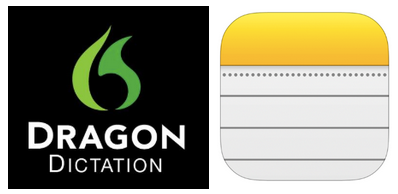Originally posted by Jennifer L. on September 27, 2019.
Something that has been really useful for me in the classroom is the speech to text capabilities of the iPad for my students who have difficulties with writing output. The iPad is a portable, easy to use tool that students can take to a private area to complete writing assignments away from prying eyes of classmates (though this doesn’t always work out magically, as some struggling students are still resistant to using speech to text apps, convinced that it’s a crutch since no one else needs this adaptation).
However, using speech to text has not always been smooth sailing.
Dragon Dictation was the app that my school had installed onto all our iPads. True to the low rating on the app store, the app was difficult to use and did not always catch every word. Furthermore, trying to fix the mistakes often led to the application freezing, forcing the student to re-record everything. Saving texts was also a long process, and often I would have to help the student open up an email client, paste it into an email and send it to me. I stopped trying to use this app after a year.

Apple’s Notes app that comes pre-installed is now my tool of choice. The speech to text function is easy to learn (straight out of the keyboard). It’s easy to edit text and emailing the text is quite straightforward (using the share button). No more trying out free apps with limited functions!
Well, I tried several Speech to Text apps and noticed the following problem: my accent makes the result unpredictable. I would recommend Speech to Text technologies to those lucky international students who have a slight/subtle accent in their English – this way they will be able to control their speech better. For the rest of us, poor non-native English speakers, the usage of Speech to Text apps could be counterproductive (discouraging)
The reason why I picked this post from a previous cohort of ETEC523 had more to do with my current course load which includes ETEC540 (Text Technologies: The Changing Spaces of Reading and Writing) and the recent task we had to complete for the course which centered around using speech to text technology to record a story. I seriously question whether we would be doing students a favor by making use of this technology if they are already struggling with writing. Although it might seem like a perfect and simple solution to help students produce written work for assessment or to build their self-confidence, I am not really sure how it will help them in the long term. There is a very deliberate cognitive process involved in transforming thoughts to written text which I am concerned can be bypassed through the use of speech to text apps. When writing, a story and facts are weaved together and edited to form a structured artifact of a person’s thoughts or ideas. It requires planning, structuring and the organization of ideas to create a flow in the document that can be understood by another reading the text. This is an important skill to develop in our literate society and one I am not so sure can be developed by using a speech to text technology. Writing requires practice and a lot of commitment.